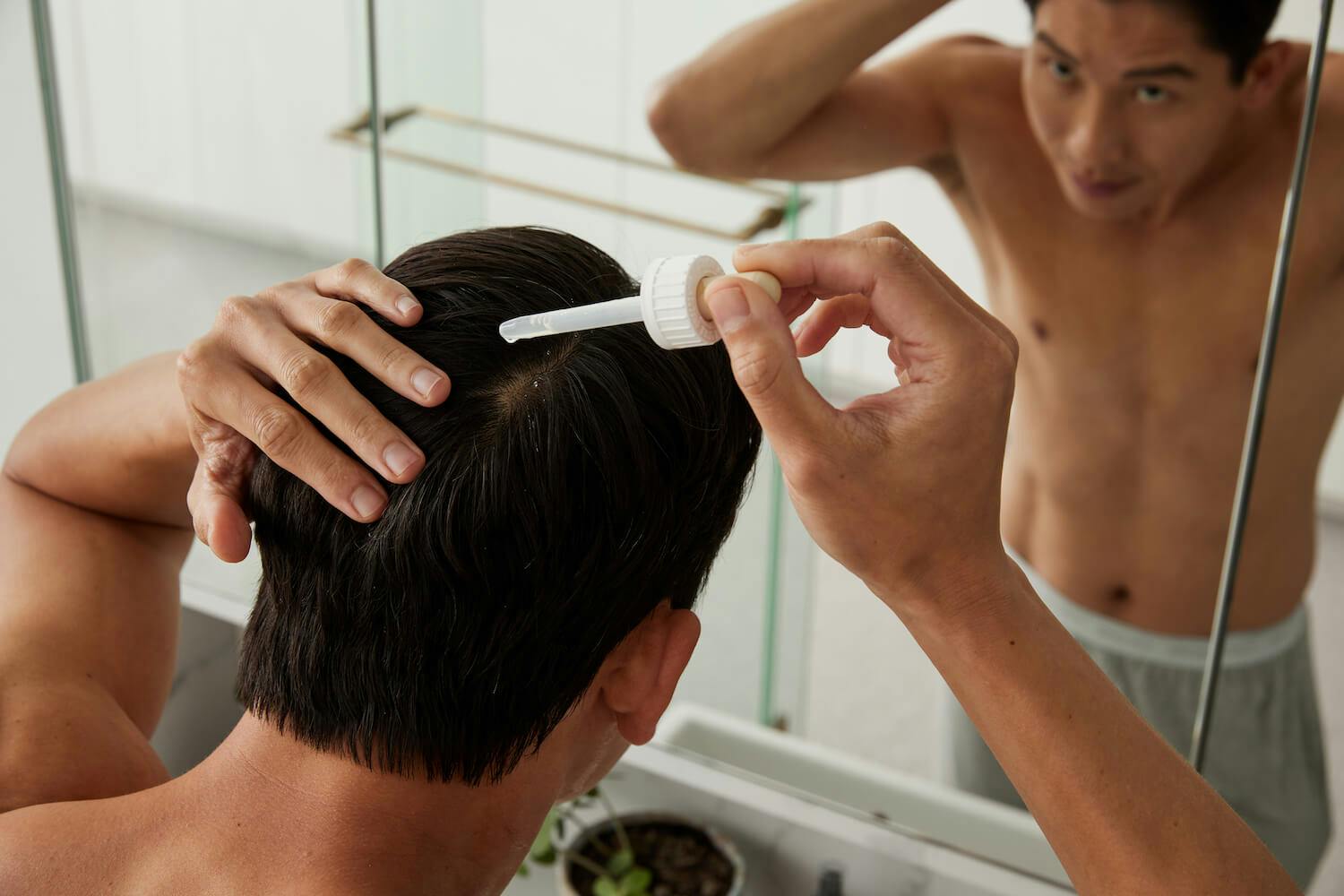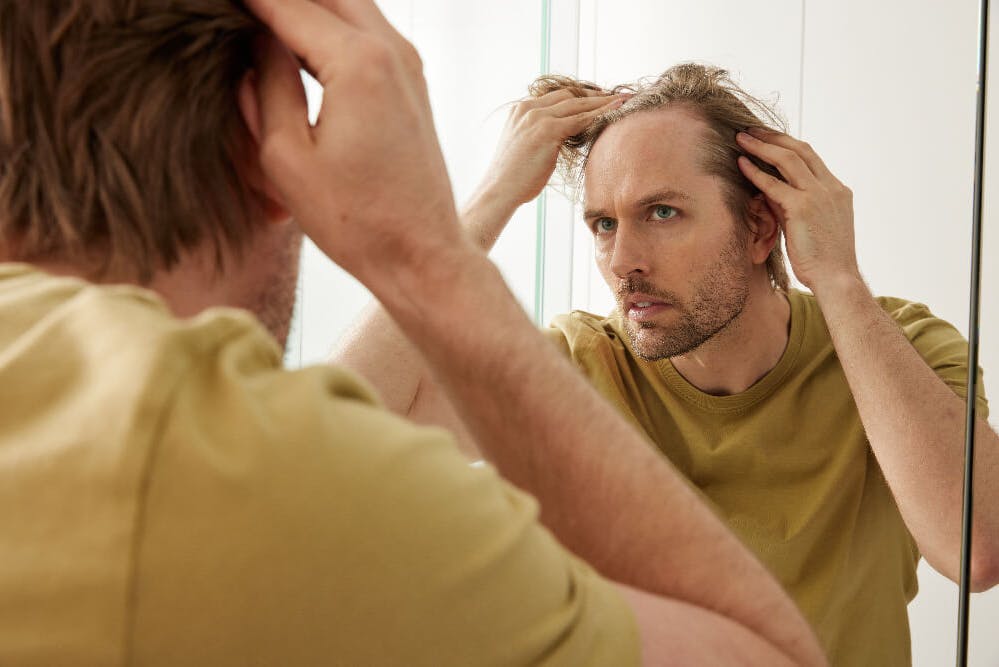How do I tell if my hairline is receding?
It may be difficult to notice that your hairline is receding if you see yourself in the mirror every day, right? To help determine if it’s time to prevent your thinning hairline or regrow your receding hairline, you can look at some of your photos taken a few years ago and see if your current hairline sits higher than before. Take note though that some haircuts, hair styling, lighting, and angles can affect how low or high your hairline looks.
If you’re unsure about the real ‘status’ of your hairline, you may want to stick to shortcut hairstyles (e.g., buzz cut), which makes it easier to detect changes that occur over time. For an even more accurate comparison, you may want to take a picture of your hair and scalp every three to six months and compare it with your previous photos.
Oftentimes, losing hair first occurs near the temples; however, others experience an overall loss of hair volume on the scalp. In advanced stages of hair loss, some men may develop a horseshoe hairline, where hair remains only on the sides and back of the head.
Contrary to popular belief, a high or V-shaped hairline doesn’t automatically mean hair loss or receding temples. First and foremost, some men have a naturally high hairline that shows a lot of their forehead, while others have a lower hairline that sits just slightly above their eyebrows.
Rather than the height and shape of your hairline, the most reliable factor that determines whether you have a receding hairline is its movement. Simply put, if your hair is thinning out especially along the hairline over the years, it’s definitely receding.
What causes a receding hairline?
While receding hairline can happen in both men and women, hair loss in men is more common. Here are some of the most common reasons hairlines retreat or thin out.
Hormones
The hormone testosterone creates a by-product called dihydrotestosterone or DHT, which is believed to interrupt the growth cycle of hair.[1] For this reason, Mosh offers a prescription receding hairline treatment that works by preventing testosterone from breaking down into DHT, which is tied to male pattern baldness.
Age
While receding hairline can start at any time after puberty, it tends to increase as you age.[2] In fact, research has shown that more than half of men aged fifty years and older experience hair loss.
Family history
If you have close family members with receding hairline, it makes you more likely to experience the same pattern of hair loss. Genetics is an influencing factor.[3]
Medications and treatments
Certain types of medical conditions and treatments (e.g., radiation and chemotherapy)[4] can cause receding hairline or ‘generalised’ hair loss on the scalp.
Stress
Studies have shown that stress can cause temporary receding hairline or hair loss. [5] People who are exposed to stress are at increased risk of experiencing this condition.
How do you fix a receding hairline?
At Mosh, we believe that the best receding hairline treatment is based on what causes it, your medical history, and the application method you find to be the most convenient. Simply put, nothing beats a personalised hair thinning treatment, which you can access if you consult with one of our health practitioners.
During your online consultation, your health practitioner creates a tailor-made receding hairline treatment that specifies the right dosage, application method, and frequency of use. Additionally, you have the option to subscribe to our balding treatment plan where you get automatic refills delivered to your doorstep as you need them.
Subscribing to our hair growth treatments comes with another perk: unlimited free health practitioner consultations. At Mosh, we believe that having ongoing support is one of the keys to achieving the best results.
Another way to achieve the best possible results is to potentially combine two or more products. For instance, some men can benefit from prescription treatment for receding hairline combined with a specially formulated shampoo or conditioner that nourishes the hair from root to tip and energises the scalp and can stimulate hair growth.
If you want to learn more about how to promote hair growth and our personalised receding hairline treatment, consult with one of our Mosh health practitioners today. With our comprehensive approach, you can effectively regrow your hairline and regain confidence.
FAQs
Q: What is a receding hairline?
A: A receding hairline refers to the process where the hair at the edges of your forehead starts thinning and moving backward, creating a more prominent forehead.
Q: What are the common causes of a receding hairline?
A: Common causes of a receding hairline include genetics, hormone imbalances, aging, certain medical conditions, and excessive styling or pulling of hair.
Q: How can a receding hairline be treated?
A: A receding hairline can be treated through various methods such as hair transplants, medications like Minoxidil, laser therapy, and PRP treatments.
Q: What are the stages of a receding hairline?
A: A receding hairline typically progresses through stages starting with a slight recession at the temples, followed by further hair loss at the front and crown of the head.
Q: Is female pattern hair loss similar to male pattern hair loss?
A: Female pattern hair loss shares similarities with male pattern hair loss in terms of gradual thinning and receding of the hairline, although the patterns and underlying causes may differ.
Q: How can I promote new hair growth and improve hair health?
A: To encourage new hair growth and improve hair health, it is important to follow a balanced diet, use hair care products suitable for your hair type, avoid excessive heat styling, and manage stress levels.
Q: What should I know about the hair growth cycle when addressing hair loss?
A: Understanding the hair growth cycle is essential in addressing hair loss as it consists of growth, transition, and resting phases, and disruption in this cycle can lead to hair thinning and loss.

